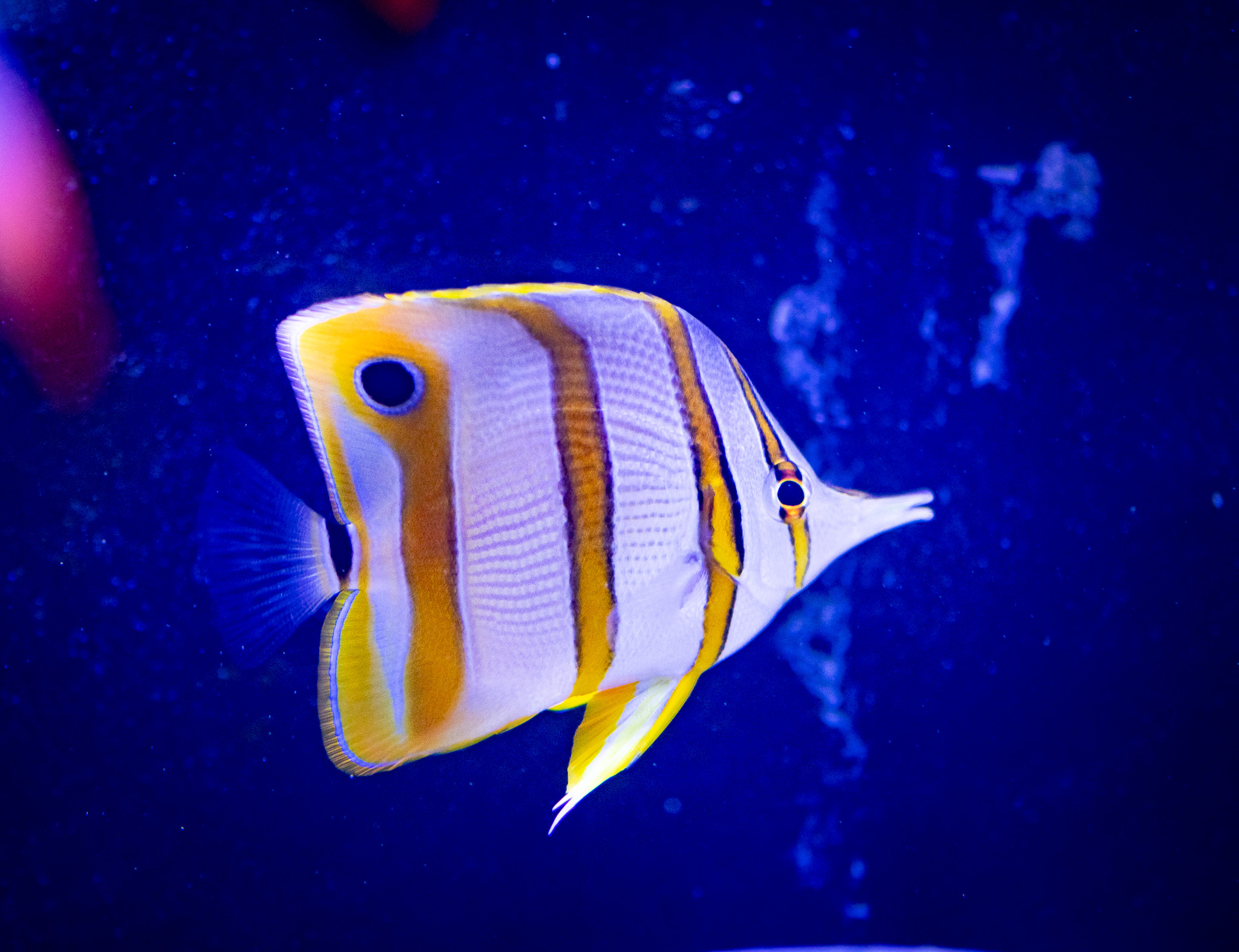Copperband Butterfly
Description
Copperband Butterflyfish (Chelmon rostratus)
Description
- Scientific Name: Chelmon rostratus
- Common Names: Copperband Butterflyfish, Beaked Butterflyfish
- Size: Up to 8 inches (20 cm)
- Coloration: Distinctive vertical copper-orange bands on a silvery-white body, with a false eyespot on the dorsal fin and a long, narrow snout
- Origin: Indo-Pacific – reefs from Australia to Indonesia and the Philippines
Care Requirements
Tank Requirements
- Minimum Tank Size: 75 gallons
- Aquascape: Lots of live rock for grazing and exploring; open swimming space
- Substrate: Sand or fine gravel
- Lighting: Moderate
Water Parameters
- Temperature: 72–78°F (22–26°C)
- Salinity: 1.020–1.025
- pH: 8.1–8.4
- Ammonia/Nitrite: 0 ppm
- Nitrate: <20 ppm
Diet
- Type: Carnivorous (picky eaters)
- Foods: Live blackworms, brine shrimp, mysis shrimp, and frozen meaty foods; some will eat Aiptasia (pest anemones)
- Feeding Frequency: 2–3 times daily
- Challenge: May refuse prepared foods; often requires live food initially
Behavior and Compatibility
- Temperament: Peaceful, somewhat shy
- Reef Safe: With caution – may nip at tube worms, feather dusters, and some corals
- Compatibility: Best with peaceful tankmates; avoid aggressive or fast-feeding fish that will outcompete it
The Copperband Butterfly also known as the Beaked Butterflyfish, Beaked Coralfish, or Orange Stripe Butterfly. The Copperband Butterfly has an elegant silver sheen bisected by several luminescent copper bands with a disc-like shaped body that is laterally compressed and it has a long protruding snout tipped with a small mouth, and a false eye on the end of its dorsal fin. The Copperband Butterfly can reach a size of 8 inches, and should be kept in an aquarium no less than 125 gallons. The tank should also have plenty of open space for swimming, and plenty of live rock, and caves for the Copperband to retreat to if it feels threatened. The Copperband Butterfly is not considered reef safe, as it will nip at most sessile invertebrates, benthic invertebrates from small crevices, most likely feeding heavily on tubeworms and small crustaceans, coral polyps, polychaete worms, feather dusters, but is a great choice for controlling pesky Aiptasia.
They are also peaceful in nature, and should not be introduced into a tank with aggressive tank mates, and unless held in a large tank, should not be housed with aggressive Tangs, Butterflyfish, or Angelfish. The small size of the Copperband Butterfly’s mouth makes its feeding habits slightly complicated. They can only grab small particles of food. They should be fed mostly a carnivorous diet, consisting of finely chopped Mysis and Brine shrimp, and other finely chopped meaty preparations.
If at first they are having difficulty eating, they may be enticed to eat live foods offered in a way that simulates their natural feeding environment. Bloodworms pushed into rocks and corals, or live clams and black mussels with their shells cracked open have been reported as successful for these difficult eaters. At first, they are not aggressive feeders so do not be wary if they are not feeding immediately.
Additional information
| Weight | 1 lbs |
|---|---|
| Dimensions | 9 × 9 × 9 in |
| Size | Extra Large, Large, Medium, Small |
Only logged in customers who have purchased this product may leave a review.









Reviews
There are no reviews yet.